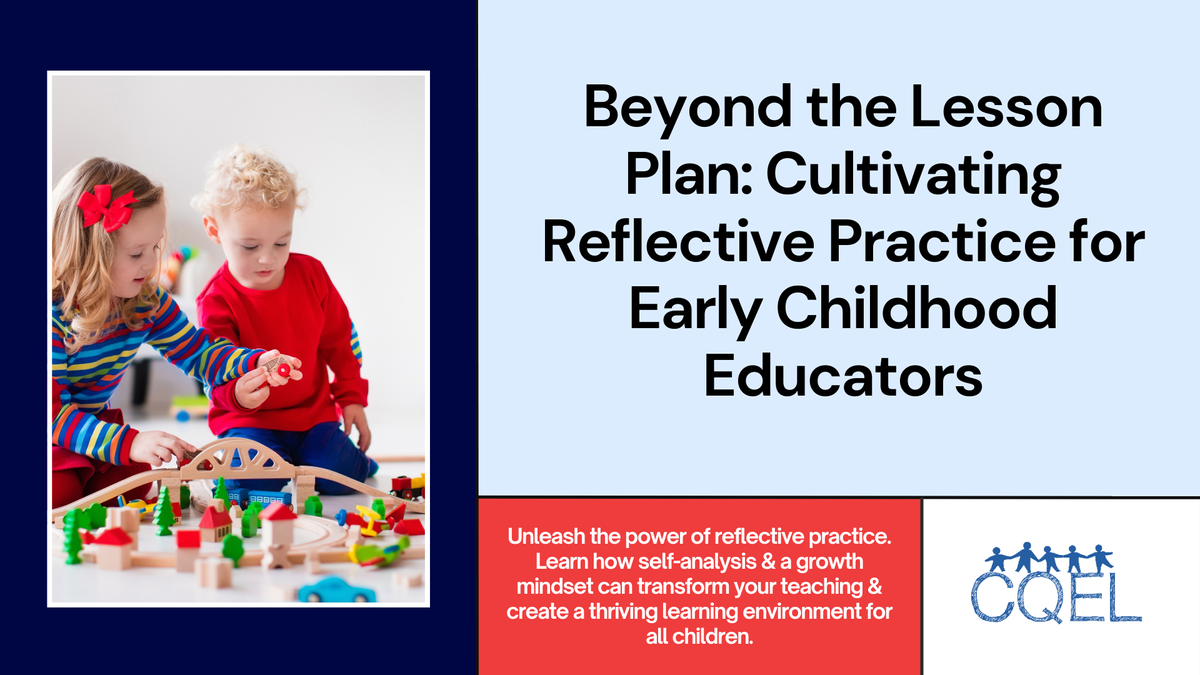Beyond the Lesson Plan: Cultivating Reflective Practice for Early Childhood Educators
Unleash the power of reflective practice. Learn how self-analysis & a growth mindset can transform your teaching & create a thriving learning environment for all children. This post equips California early childhood educators with powerful tools for improvement.

In the world of early childhood education (ECE), effective teaching goes beyond meticulously crafted lesson plans. Reflective practice, the ability to examine and analyze your teaching experiences, is emerging as a powerful tool for continuous improvement. By fostering self-awareness and encouraging a growth mindset, reflective practice allows you to become a more responsive and effective educator, ultimately benefiting the children entrusted to your care. Let's delve into how cultivating reflective practice can transform your approach to teaching and create a dynamic learning environment for all children.
The core of reflective practice lies in dedicating time for self-reflection. This might involve journaling about a particularly challenging day, analyzing video recordings of your teaching interactions, or engaging in peer discussions to gain different perspectives. The key is to focus on specific experiences or challenges you encountered in the classroom. Perhaps a planned activity fell flat, or a group of children seemed disengaged. By reflecting on these situations, you open a door to valuable insights that can inform your teaching practice.
Guiding questions are crucial for effective reflection. Instead of dwelling on failures, ask yourself open-ended questions that spark deeper analysis. What went well today? How did the children respond to the activity? Could I have presented the material differently to better engage them? These questions encourage you to consider not just the lesson itself, but also the learning environment, your interactions with the children, and your curriculum choices. By reflecting on these various aspects, you gain a holistic understanding of your teaching approach and its impact on children's learning.
Reflection doesn't end with introspection. The true power lies in transforming insights into actionable steps. Perhaps your reflection revealed that a particular activity lacked differentiation – some children finished quickly while others struggled. This could inform your planning for future lessons, leading you to incorporate activities with multiple difficulty levels or provide targeted support to children who need it most. Reflection can also guide adjustments to the classroom environment. Maybe a noisy corner is hindering focus; rearranging furniture or creating a designated quiet space could address this issue. The key is to document the changes you make and observe their impact on children's learning and engagement. This ongoing cycle of reflection, action, and observation allows you to continuously refine your teaching approach and create a learning environment that truly meets the needs of all children.
The state of California recognizes the importance of reflective practice in ECE settings. The California Department of Education offers Professional Learning for Early Care and Education resources, including workshops and training programs that can equip you with valuable strategies for self-reflection and integrating this approach into your teaching practice.
Reflective practice is not about finding fault; it's about embracing continuous learning and growth. By taking the time to analyze your teaching experiences, you gain valuable insights that can transform your classroom into a dynamic and responsive learning environment. CQEL, Californians for Quality Early Learning (www.caqualityearlylearning.org), offers a wealth of resources on this topic, including guidance on self-reflection strategies, using data to inform reflection, and translating reflection into actionable changes. So, embrace reflective practice as a transformative tool for your professional journey in ECE. As you cultivate your ability to analyze and learn from your teaching experiences, you'll not only become a more confident and effective educator, but you'll also create a space where every child can thrive and reach their full potential.
